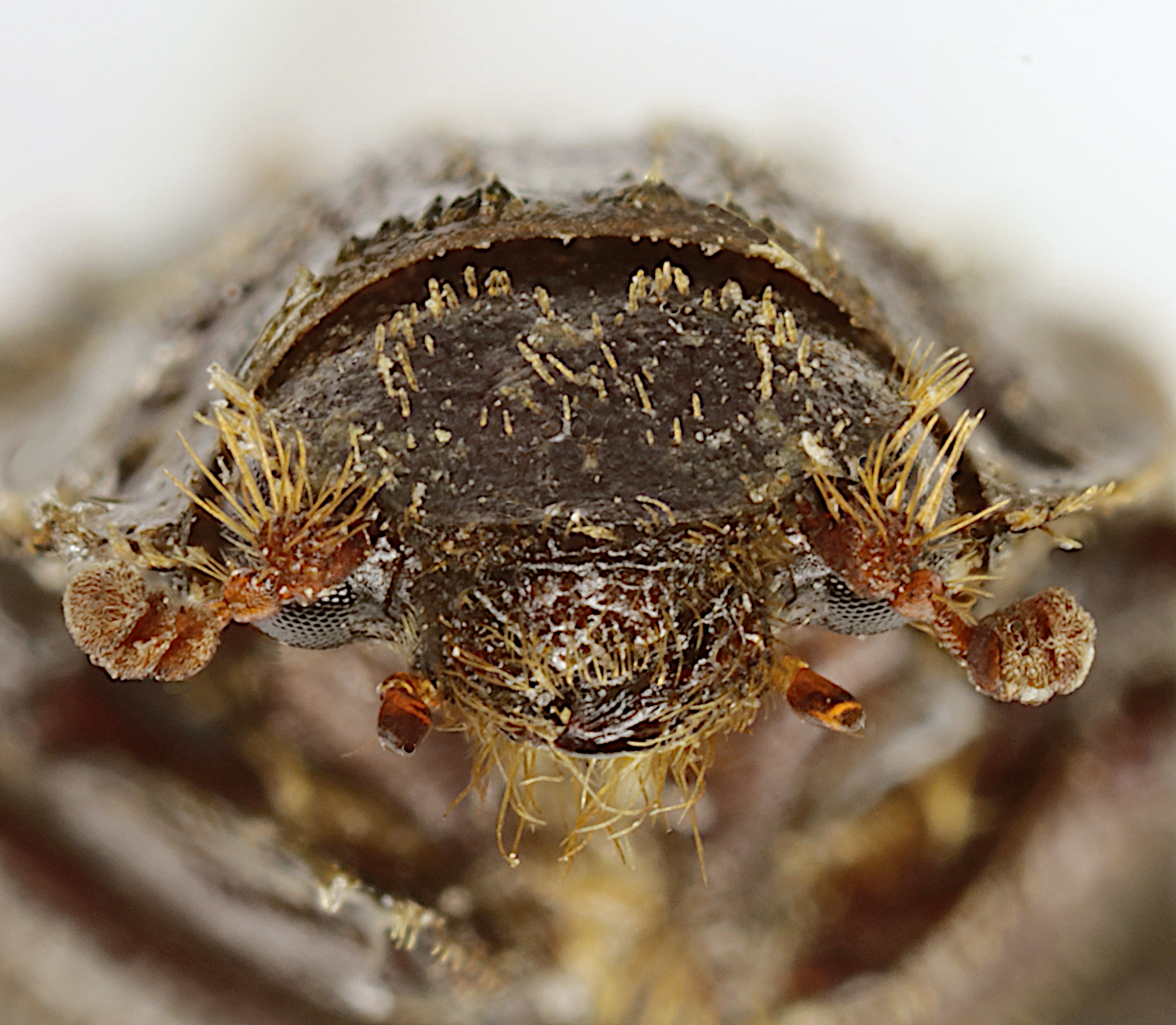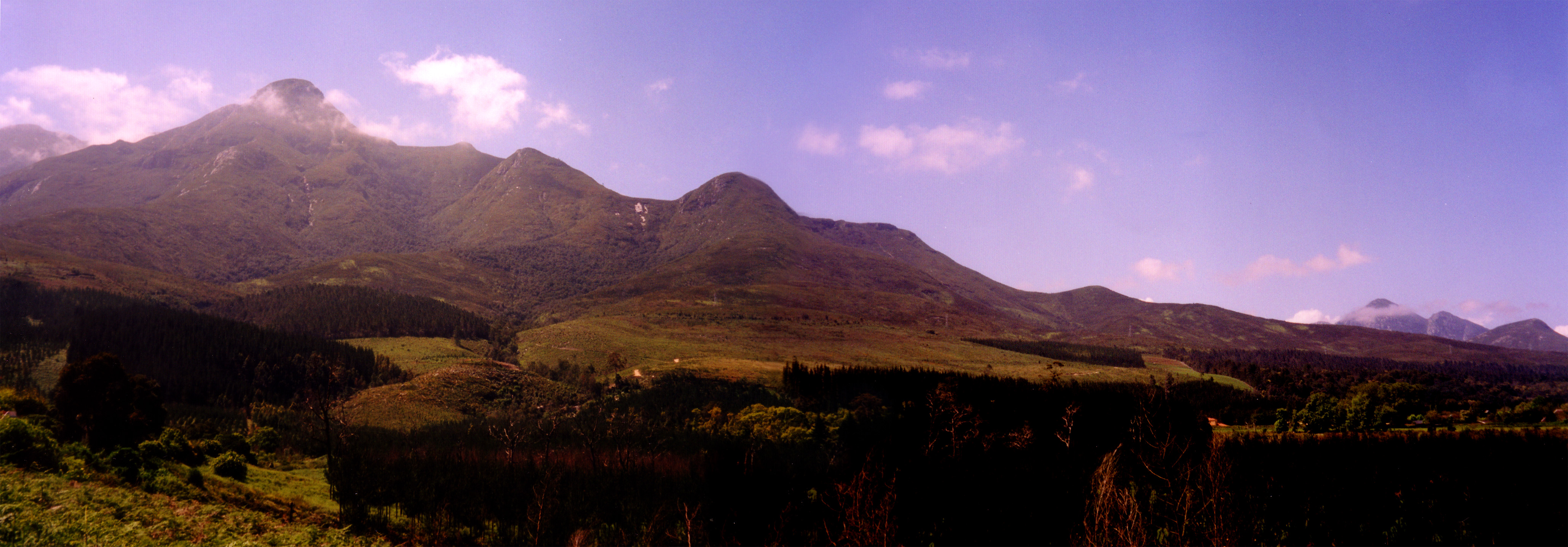|
Phoberus Herminae
''Phoberus herminae'' is a species of hide beetle in the subfamily Troginae discovered by coleopterologist Werner P. Strümpher in 2016. Taxonomy Initially, the scientific community treated all ''P. herminae'' specimens as part of the ''P. capensis'' species. These beetle specimen resided within the genus ''Trox''. When ''Phoberus'' was recognized as a full genus, taxonomists moved ''P. capensis'', and all ''P. herminae'' beetles along with it, from the genus ''Trox'' to the genus ''Phoberus''. Recent evolutionary genetics allowed coleopterologist Strümpher and his team to uncover molecular and morphological differences between mainline ''P. capensis'' beetles and the ''P. herminae'' variant, causing the new ''Phoberus herminae'' species to be discovered and classified. Within the genus ''Phoberus'', ''P. herminae'' is most similar to ''P. capensis'' and ''P. disjunctus'' due to their shared evolutionary history, and historically researchers have often confused the three specie ... [...More Info...] [...Related Items...] OR: [Wikipedia] [Google] [Baidu] |
Hide Beetle
Trogidae, sometimes called hide beetles, is a family of beetles with a distinctive warty or bumpy appearance. Found worldwide, the family includes about 300 species contained in four or five genera. Trogids range in length from 2 to 20 mm. Their shape is oblong to oval, with a generally flat abdomen. Their color ranges from brown to gray or black, and they often encrust their bodies with soil. They resemble Scarabaeidae, scarab beetles with heavy limbs and spurs. They are scavengers and are among the last species to visit and feed on carrion. They are most often found on the dry remains of dead animals. Both adults and larvae eat feathers and skin. Some species are found in bird and mammal nests. Details of the life histories of many species are poorly known, since many are specialized to particular types of nests. They are often overlooked by predators and collectors due to their behaviors of covering their bodies with soil and becoming motionless when disturbed. This group ma ... [...More Info...] [...Related Items...] OR: [Wikipedia] [Google] [Baidu] |
Troginae
''Troginae'' is a subfamily of beetles in the family Trogidae which includes extant species and extinct beetle species from the Lower Cretaceous. The subfamily contains the following genera: * Glyptotrox Nikolajev, 2016 *Paratrox Nikolajev, 2009 *Phoberus MacLeay, 1819 *Trox ''Trox'' is a genus of hide beetle in the subfamily Troginae. Taxonomy In recent years, scientists have revamped the taxonomy of ''Trox''. The formerly massive genus, which boasted a whopping 160 species, has been cut down. Specifically, the ... Fabricius, 1775 References {{Taxonbar, from=Q21227524 Trogidae ... [...More Info...] [...Related Items...] OR: [Wikipedia] [Google] [Baidu] |
Paramere
Parameres ('side parts') are part of the external reproductive organs of male insects and the term was first used by Karl Wilhelm Verhoeff, Verhoeff in 1893 for the lateral genital lobes in Coleoptera. The primary phallic lobes which appear in the nymph or larval stages may become a pair of penes in the Ephemeroptera or a simple median penis in the Thysanura. In higher insect orders from Orthoptera to Hymenoptera, each of the primary lobes is divided into two secondary lobes or phallomeres, termed parameres and mesomeres (NB: this use of the term "mesomere" is not to be confused with the Somite, same term in Segmentation (biology), segmentation embryology.) In adult insects parameres may elongate and become genital claspers. These claspers may themselves occur in two segments, forming a Anatomical terms of location#Proximal and distal, proximal basimere and a Anatomical terms of location#Proximal and distal, distal telomere (insect morphology), telomere or harpago ('grappling hook' ... [...More Info...] [...Related Items...] OR: [Wikipedia] [Google] [Baidu] |
Pronotum
The prothorax is the foremost of the three segments in the thorax of an insect, and bears the first pair of legs. Its principal sclerites (exoskeletal plates) are the pronotum (dorsal), the prosternum (ventral), and the propleuron (lateral) on each side. The prothorax never bears wings in extant insects (except in some cases of atavism), though some fossil groups possessed wing-like projections. All adult insects possess legs on the prothorax, though in a few groups (e.g., the butterfly family Nymphalidae) the forelegs are greatly reduced. In many groups of insects, the pronotum is reduced in size, but in a few it is hypertrophied, such as in all beetles (Coleoptera). In most treehoppers (family Membracidae, order Hemiptera), the pronotum is expanded into often fantastic shapes that enhance their camouflage or mimicry. Similarly, in the Tetrigidae, the pronotum is extended backward to cover the flight wings, supplanting the function of the tegmina. See also *Glossary of entomolo ... [...More Info...] [...Related Items...] OR: [Wikipedia] [Google] [Baidu] |
Aedeagus
An aedeagus (plural aedeagi) is a reproductive organ of male arthropods through which they secrete sperm from the testes during copulation with a female. It can be thought of as the insect equivalent of a mammal's penis, though the comparison is fairly loose given the greater complexity of insect reproduction. The term is derived from Ancient Greek αἰδοῖα (''aidoia'', "private parts") and ἀγός (''agos'', "leader"). It is pronounced or . The aedeagus is part of the male's abdomen, which is the hindmost of the three major body sections of an insect. The pair of testes of the insect are connected to the aedeagus through the genital ducts. The aedeagus is part of the male insect's phallus, a complex and often species-specific arrangement of more or less sclerotized (hardened) flaps and hooks which also includes in some species the valvae (clasper), which are paired organs which help the male hold on to the female during copulation. During copulation, the aedeagus co ... [...More Info...] [...Related Items...] OR: [Wikipedia] [Google] [Baidu] |
South Africa
South Africa, officially the Republic of South Africa (RSA), is the southernmost country in Africa. It is bounded to the south by of coastline that stretch along the South Atlantic and Indian Oceans; to the north by the neighbouring countries of Namibia, Botswana, and Zimbabwe; and to the east and northeast by Mozambique and Eswatini. It also completely enclaves the country Lesotho. It is the southernmost country on the mainland of the Old World, and the second-most populous country located entirely south of the equator, after Tanzania. South Africa is a biodiversity hotspot, with unique biomes, plant and animal life. With over 60 million people, the country is the world's 24th-most populous nation and covers an area of . South Africa has three capital cities, with the executive, judicial and legislative branches of government based in Pretoria, Bloemfontein, and Cape Town respectively. The largest city is Johannesburg. About 80% of the population are Black South Afri ... [...More Info...] [...Related Items...] OR: [Wikipedia] [Google] [Baidu] |
Western Cape
The Western Cape is a province of South Africa, situated on the south-western coast of the country. It is the fourth largest of the nine provinces with an area of , and the third most populous, with an estimated 7 million inhabitants in 2020. About two-thirds of these inhabitants live in the metropolitan area of Cape Town, which is also the provincial capital. The Western Cape was created in 1994 from part of the former Cape Province. The two largest cities are Cape Town and George. Geography The Western Cape Province is roughly L-shaped, extending north and east from the Cape of Good Hope, in the southwestern corner of South Africa. It stretches about northwards along the Atlantic coast and about eastwards along the South African south coast (Southern Indian Ocean). It is bordered on the north by the Northern Cape and on the east by the Eastern Cape. The total land area of the province is , about 10.6% of the country's total. It is roughly the size of England or the S ... [...More Info...] [...Related Items...] OR: [Wikipedia] [Google] [Baidu] |
Langeberg
The Langeberg Range is a mountain range in the Western Cape province of South Africa. Its highest peak is Keeromsberg at 2,075 m that lies 15 km northeast of the town of Worcester. Some of the highest peaks of the range are located just to the north of Swellendam, in a subrange known as the Clock Peaks whose highest point is the 1,710 m high Misty Point. Local lore states one can tell the time by means of the shadows cast by the seven summits of the Clock Peaks. Etymology The name is Dutch and means "long mountain" Physiography and geology The range runs roughly NW/SE in its western part and in an east-west direction in its mid and eastern section and is approximately 250 km long, from Worcester, past Robertson, Montagu, Swellendam, Heidelberg and Riversdale to the proximity of George. The Langeberg's most westerly point is located 5 km east of the town of Worcester; the range ends some 20 km North of Mossel Bay in the east. The open plains of the Little ... [...More Info...] [...Related Items...] OR: [Wikipedia] [Google] [Baidu] |
Outeniqua Mountains
The Outeniqua Mountains, named after the Outeniqua Khoikhoi who lived there, is a mountain range that runs a parallel to the southern coast of South Africa, and forms a continuous range with the Langeberg to the west and the Tsitsikamma Mountains to the east. It was known as ''Serra de Estrella'' (Mountain of the Star) to the Portuguese. The mountains are part of the Garden Route of South Africa. Nomenclature "Outeniqua" is said to be derived from a Khoikhoi tribe that once lived in the mountains, and means "they who bear honey". Indigenous rock paintings can still be found in the area. History The region was first explored by white settlers in 1668 and in 1782, French explorer and ornithologist François Levaillant explored the area and discovered farmers had settled at foot of the mountain range. Historic incidents On 1 June 2002, former South Africa cricket captain Hansie Cronje's scheduled flight home from Johannesburg to George, Western Cape was grounded so he hitched a ride ... [...More Info...] [...Related Items...] OR: [Wikipedia] [Google] [Baidu] |
Keratin
Keratin () is one of a family of structural fibrous proteins also known as ''scleroproteins''. Alpha-keratin (α-keratin) is a type of keratin found in vertebrates. It is the key structural material making up scales, hair, nails, feathers, horns, claws, hooves, and the outer layer of skin among vertebrates. Keratin also protects epithelial cells from damage or stress. Keratin is extremely insoluble in water and organic solvents. Keratin monomers assemble into bundles to form intermediate filaments, which are tough and form strong unmineralized epidermal appendages found in reptiles, birds, amphibians, and mammals. Excessive keratinization participate in fortification of certain tissues such as in horns of cattle and rhinos, and armadillos' osteoderm. The only other biological matter known to approximate the toughness of keratinized tissue is chitin. Keratin comes in two types, the primitive, softer forms found in all vertebrates and harder, derived forms found only amon ... [...More Info...] [...Related Items...] OR: [Wikipedia] [Google] [Baidu] |
Pliocene
The Pliocene ( ; also Pleiocene) is the epoch in the geologic time scale that extends from 5.333 million to 2.58See the 2014 version of the ICS geologic time scale million years ago. It is the second and most recent epoch of the Neogene Period in the . The Pliocene follows the Epoch and is followed by the Epoch. Prior to the 2009 ... [...More Info...] [...Related Items...] OR: [Wikipedia] [Google] [Baidu] |





